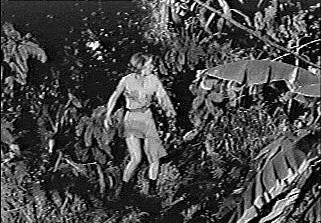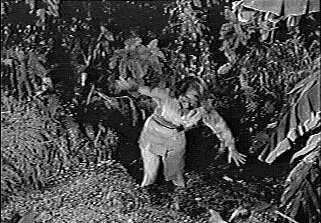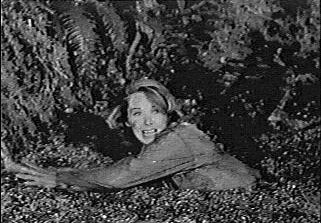 |
The year is perhaps 1962. I am somewhere between the ages of 4 or 5 years old. The family is gathered in the living room, engaged in that great American pastime, watching TV. My brothers are all serious Edgar Rice Burroughs fans, so we are watching what could well have been the television premier of Tarzan's Hidden Jungle.
 |
A young woman blunders through the jungle in a blind panic. The impenetrable jungle foliage tears at her clothes. She is lost. She stumbles on, not knowing where to go to find safety. Tripping over a jungle root, she puts out her hand to steady herself, and comes face to face with a huge snake. She flees, further terrified than she already was.
 |
Distracted, unaware of the potential danger in where she steps, she plunges out of the darkness onto the first clear ground she has found since entering the jungle, and there she stops. She gazes at where her feet should be, for they have disappeared in the moist earth.
 |
As the scene continues, the young woman fights for her life against an implacable foe. She is sinking, trapped in quicksand. Tugging, pulling the vegetation that rings the quagmire. pawing the stuff of the bog itself, she struggles in vain for anything that might gain her a path to escape.
 |
But there is no hope of escape. For all of her efforts, she only sinks deeper into the voracious earth. Everyone in the room is certain of her fate. All but one. A young boy watches the terrifying scene (Scary by 1950's standards) and thinks, Cute girl. What a big mud puddle. I'd like to play there.
 |
But the child is not completely naive, he can tell that the scene is supposed to be frightening. Never being one to withhold a question, he speaks up. "I don't get it. I know this is supposed to be scary, but it looks like fun."
His brother speaks, "You idiot. That's quicksand. She could drown."
 |
In that brief exchange, I learned several things: